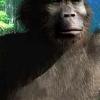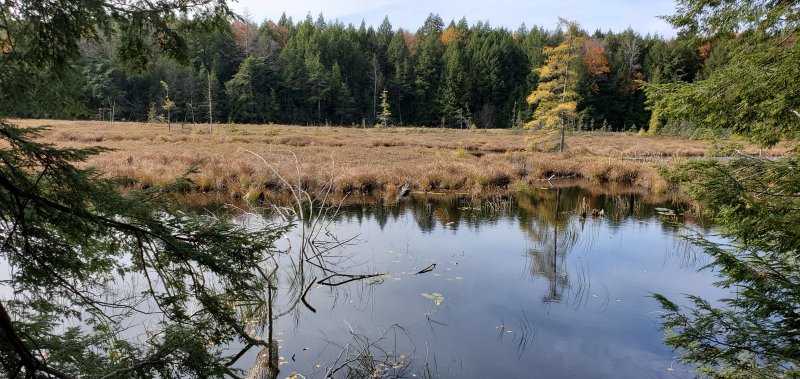Leaderboard
Popular Content
Showing content with the highest reputation on 11/26/2020 in all areas
-
In answer to your very reasonable question, Moonface, my sighting 40+ years ago was of a creature of similar size and shape to Patty, but far enough away to be unable to compare other details. It was about 100 to 150 yards distant, and moving away from me, so no frontal view at all, and I had no binoculars or scope to enhance the details.3 points
-
I don't know why the down votes or hostility. That sucks. NorthWind and I saw two on the FLIR on July 5th at night.. So, it was pitch black and their signatures bright white, mostly blobs. I saw shoulders and a head silhouette very clearly. We think one of them was around 9 feet tall? So, I can't really answer your question. We MAY have seen one in broad daylight watching us from a drainage pipe across a river. Again, it was ambiguous. Could have been a weirdo standing in 2 inches of water in the middle of nowhere, not near any trails, in all dark clothing, who stepped backwards into the pipe when he saw us notice him. I hesitate even to bring this up. This was on October 17th. I don't know what we saw that day. It happened too fast for pictures. When we got over there an hour later, there was nothing there. All I can say for certain is that it was suspect, and at least 6 feet tall judging by the height of the pipe. Sorry, not much help. I have a pixilated photo really zoomed in, of the one who yelled at me. Looked more like a person than Patty. But, it's a horrible photo, more of a blobsquatch. I did not see it in person. Only found it in the photo I took at the same time that it yelled at me. I certainly hope some day to be able to answer this question in detail.2 points
-
This forum is hard work. As a newbie I found there to be a bit of an unfriendly 'vibe', making it difficult to fit in. The downvotes in here highlight that. It's because you're not part of the 'in crowd' Moonface. This is why I stopped bothering.2 points
-
Even in daylight, flushing a grouse right at your feet in tall grass will set you back on your heels! Of course, so will a rattler, and I've done both.2 points
-
Reprinted with Permission 9/2/2020 The RELICT HOMINOID INQUIRY 2:103-122 (2013) Brief Communication FOOTPRINT EVIDENCE - THE LONDON TRACKWAY Cliff Barackman Portland, OR 97220 Correspondence to: Cliff Barackman, email: NorthAmericanBigfoot@gmail.com. © RHI ABSTRACT In February, 2012 a long line of large human-like footprints was found in the muddy lakebed of Cottage Grove Reservoir near the unincorporated town of London, OR. Many of the footprints were cast, and numerous measurements were obtained from the site. An analysis of the collected casts and measurements has given more insight into the track maker. The inferred gait of the track maker is consistent with other purported sasquatch trackways in step length and lack of straddle. Anatomical features of the foot can be inferred from observations of the casts, such as toe stems, fat pads, underlying bone structure, and possibly toe nails. The spontaneity and natural way the trackway seems to have been laid down supports the hypothesis that it was made by a wild primate as of yet still unrecognized by science. Further analysis is needed to evaluate this hypothesis. KEY WORDS: sasquatch, Bigfoot, bipedal locomotion, Oregon On Sunday, February 12, 2012, Max Roy, of Eugene, OR, walking his dog happened upon some large ( 38cm) human like footprints near the shore of Cottage Grove Lake outside the unincorporated town of London, OR. He returned the next day to take photographs of the prints (Fig 1.). The first four footprints were found on a muddy berm above the lake bed . When initially discovered, the prints were reportedly in excellent condition, but in the interval before they were photographed, precipitation had filled the footprints and slightly distorted their previously crisp shape. Word of this find passed through several people until it finally reached me on Wednesday, February 15, 2012. I instructed another researcher ,Toby Johnson (Eugene, OR) how to cast these footprints. The next morning I received an excited call from Johnson telling me there were over 100 footprints previously overlooked in the muddy lake bed nearby. During the winter, the Army Corps of Engineers lowers the lake level exposing more than 100m of muddy substrate. The additional footprints traced a path through this muddy sediment and adjacent sandy banks. After arriving at the site that evening, another investigator ,Chris Minniear and I cast 72 of the 122 footprints available available1 (Fig. 2). Over the next few days, other researchers , including Toby Johnson, Beth Heikkinen, Thom Powell, Guy Edwards and others visited the site and cast more than two dozen additional footprints from the trackway. Though the study of these footprints is still ongoing, a number of interesting findings can now be presented . These observations derive from the photographs of the footprints themselves in the ground, a collection of measurements of prints and gait taken at the site by several investigators, and a close examination of the resulting footprint casts , including three dimensional scans of a selection of casts carried out at the Idaho Virtualization Laboratory on the campus of Idaho State University, Pocatello, ID (Fig. 3 and 4). The location of the track find fits the description of the habitat commonly associated with sasquatch encounters (Fi g. 5 ). The surrounding area is thickly forested, with mixed fir and cedar being the predominant tree species. Immediately adjacent to the trackway location are two marshes through which small creeks drain into the larger reservoir. While there are a few houses nearby, there is ample space for large mammals to move about freely with little chance of being seen, especially at night. The trackway itself gives some insight into the way the track maker walked. The inferred gait is very atypical of the way humans walk, and is consistent with previous purported sasquatch track finds and observation by eyewitnesses . It has long been noted that when striding across the substrate, sasquatch trackways show little straddle, i.e., the feet fall in a narrow line, as if tight rope walking. The typical step length (measured from a fixed point in one footprint to the same point on the next contralateral footprint) averaged 114.5 cm. The shortest measured step was 83.8cm, while the longest was 137.2 cm, giving a range of 53.3 cm. While it is possible for a human to replicate this step length, it would be exceedingly difficult to do so while wearing some sort of over sized prosthetic and traversing a variety of substrates for nearly 150 m. The aforementioned lack of straddle in the trackway would only serve to increase the difficulty of reproducing this trackway . The individual footprints were clearly defined in the soft mud of the lake bed, and the resulting casts preserved most, if not all, of this detail. Many details, such as foot shape and striations on the toes, are consistent from foot to foot. For example, striations on the second digit of the right foot are consistent in shape in each right print. Those on various left toes are consistent from left foot to left foot, but different from the right foot. Such consistency might be indicative of a static feature of the foot such as toe nails. There is also a possibility that such a feature could indicate an artifact of a fake prosthetic making the prints, such as wood grain or a roughly carved toe outline, but other details seen in the casts do not lend support to this possibility. Many of the footprints are very cleanly defined. A bulge along the lateral edge of the foot apparently indicates the tuberosity of the fifth metatarsal. It is more distally positioned than in human feet. This foot anatomy and its implications have been evaluated by both Krantz (1972, 1999) and Meldrum (2004, 2006, 2007). This relative anterior position in the underlying moidfoot bone structure is the result of the elongated heel segment of the foot. This same heel elongation can be observed in both the Patterson/Gimlin film, as well as a number of examples of footprint casts, such as the Bossburg cripple foot . Some preliminary calculations further illustrate this distinction in proportion of foot segments. Five examples of human footprints (including the footprint of a person standing 2.2m) and five examples from the London trackway, indicated that the bulge on the lateral side of the foot , corresponding to the base of the fifth metatarsal was on average 33% of the length of the foot from the heel in humans, while it was 43% of the length in the London trackway casts . The proportions of the foot skeleton have been modified in a useful biomechanical redesign necessary to support a more massive biped . In nearly every footprint example, the toes impressed more deeply than any other part of the foot. Three toes were consistently visible in the vast majority of the prints, although there were many examples with four and five toes evident . The prominence of toes 1-3 suggests that the track maker used its medial toes in a tridactyl grasping manner when walking through the muddy lake bed . The greater depth of the toe imprints compared to the shallow heel imprint seems consistent with recent research suggesting this is a normal product of a flat footed bent knee compliant gait, as the sasquatch reportedly employs. Many of the tracks show striations on the toes prints. The striations are consistent from footprint to footprint, and on respective toe imprints. In many of the casts, the striations only extend for about half or a little more the toe print depth, while the part of the toe impressed deeper is smooth and nicely rounded (Fig. 6 ). Still other casts show what appears to be a cleanly defined edge to the overhanging part of the presumed toe nail (Fig. 7 ). In other casts the striations are not all parallel, suggesting independent toe flexion (Fig. 8 ). In a rigid prosthetic, all toes would be connected and would necessarily all share the same vectors when making the striations, whether they were made on the initial impression or the pull out. This simply is not the case with the observed toe impressions, so it is unlikely that such a false foot could have been used to fabricate the footprints. The casts exhibit some evidence of a thick sole pad, as has been hypothesized for the bottom of the sasquatch foot (Cachel, 1985; Krantz, 1999). As the foot presses into the substrate, the fat pad on the bottom of the foot and toes would expand outwards. As the foot is lifted from the impression, the fat pad would rebound and contract inwards . This may leave a slight overhang to the side walls of the impression, if the conditions of the substrate were appropriate. This so called “mushroom effect” can be seen in at least one of the London casts. In cast number 6 the 41st print in the trackway the third, fourth, and fifth digits all show this overhanging sidewall (Fig. 9 ). The toe stems are plainly visible in several of the footprints (Figs. 10 and 11). There is a nicely rounded contour extending between the digital pads at the toe tips and the ball of the foot, clearly indicating the stems of toes. There are other examples of independent toe movement and flexibility. On many of the casts, it is quite clear that individual digits impressed deeper in some footprints than in other prints. This is evident when one compares the differences in depth between the various toes from cast to cast (Fig. 12). At one point in the trackway ( cast 17), the creature seems to have slipped. A long, sliding impression measured 61cm long and 10 cm wide where the left footprint was expected to be, according to the pattern of step lengths (Fig s . 1 3 and 14 ). Immediately adjacent to the right of this streak was a disturbance in the ground where I interpret the right foot touched down briefly, in order to steady the track maker . Just ahead of this streak and to the right were two footprints, a right and a left, that were imprinted close together. The angle between the right and left footprint is approximately 150 degrees. The next footprint was a right print that was more than a meter away. I interpret this as the track maker spinning around clockwise as it regained its balance before continuing its trek across the muddy flat (Fig. 15). This acrobatic feat would seem nearly impossible for any hoaxer wearing large prosthetic feet. Perhaps this slippage partly explains the deep grasping action by the medial toes in many of the footprints. The extent of the London trackway, and its thorough documentation, provide a rare opportunity to examine the locomotor behavior attributed to sasquatch, and will afford extensive quantitative analysis of this trace evidence . Th ere are many preliminary aspects that suggest that it was not faked, and was in fact left by a living biped, i.e. sasquatch. The species remains unrecognized by science, but the London trackway seems consistent with the accumulated data. LITERATURE CITED Cachel S (1985) Sole pads and dermatoglyphics of the Elk Wallow footprints. Cryptozoology 4:45-54. Krantz G (1972) Anatomy of the sasquatch foot. Northwest Anthropological Research Notes 6(1):91-104. Krantz G. Bigfoot sasquatch evidence. Blaine, WA: Hancock House Publishers Ltd., 1999. Meldrum DJ (2004) Midfoot flexibility, fossil footprints, and sasquatch steps: New perspectives on the evolution of bipedalism. Journal of Scientific Exploration 18:67-79. Meldrum DJ (2006) Sasquatch: Legend meets science. New York: Tom Doherty Associates. Meldrum DJ (2007) Ichnotaxonomy of giant hominoid tracks in North America. In: Lucas SG, Spielman JA, Lockley MG, editors, Cenozoic vertebrate tracks and traces. New Mexico Museum of Natural History and Science Bulletin 42:225-231. Raichlen DA, Gordon AD, Harcourt-Smith WEH, Foster AD, Haas WR (2010) Laetoli footprints preserve earliest direct evidence of human-like bipedal biomechanics. PloS One 5(3): e9769. Figure 1a. A portion of the London Trackway (credit Max Roy) Figure 1b. Close-up of a print from the London trackway (credit Max Roy) Figure 2. Casting the footprints in the London Trackway Figure 3. A sample of the casts were scanned to produce 3-D images (credit: Idaho Virtualization Laboratory) Figure 4. Varying perspectives of a 3-D model of a scanned representative cast (credit: Idaho Virtualization Laboratory) Figure 5. Satellite map of Cottage Grove Lake north of London, OR (labelled A). Figure 6. Cast 53 exhibiting striations and rounded toes (distal view) Figure 7. Cast 54 with possible toe nail edges Figure 8. Cast 6 toe impressions with nonparallel striation angle differentiation (distal view) Figure 9. Cast 6 with toe pads displaying mushroom effect (distorlateral view) Figure 10. Cast 29 exhibiting rounded toe stems (oblique proximal view) Figure 11. Cast 50 depicting rounded toe stems (oblique lateral view) Figure 12. Toe variability evident in Tracks 39, 85 and 97 (top to bottom) Figure 13. Slide. Figure 14. Slide and two subsequent footprints beyond. Track maker apparently slipped and pirouetted around, changing direction of travel.1 point
-
For those who've had reasonably clear sightings... how closely did the BF resemble Patty?1 point
-
Darn Toughs are awesome. We also love Farm to Feet, made in Mt. Airy, NC and they source their wool from US farms.1 point
-
1 point
-
There is no in crowd. The only ones who don't do well here are rude and close minded on both sides of the fence. They are nice to me and I don't believe in the creature . I gave both of you trophies. Hope it helps1 point
-
Guessing you mean Blue Meanies? If so, please try to stay on topic. The Blue Meanies are an unknown species, introduced in 1968 and suspected to be created by people under psychedelic influence and experienced by people under psychedelic influence.1 point
-
Geez, now I got one, too, for encouraging folks to post their encounters. Tough crowd, or a buncha meany-heads.1 point
-
Snow snakes?!?! Jumped two grouse earlier this week. One in the dark, the other in the middle of the day. A jumped grouse in pitch black will make your heart skip.1 point
-
1 point
-
0 points
-
-1 points
-
Oh, it is. And the subject has been sorted through a time or two. You might search histories of the various threads discussing it. Of course, I encourage anyone with input to chime in and contribute to answering the question posed by Moonface. Regretfully, I have no personal accounts to mention. There was that thunderbird...........-1 points
-
Another downvote?? Can anybody point me in the direction of previous discussions on this subject please? I'm interested. (Awaiting another downvote.)-1 points
This leaderboard is set to New York/GMT-05:00

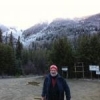

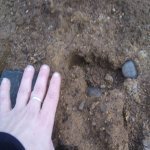



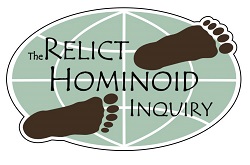

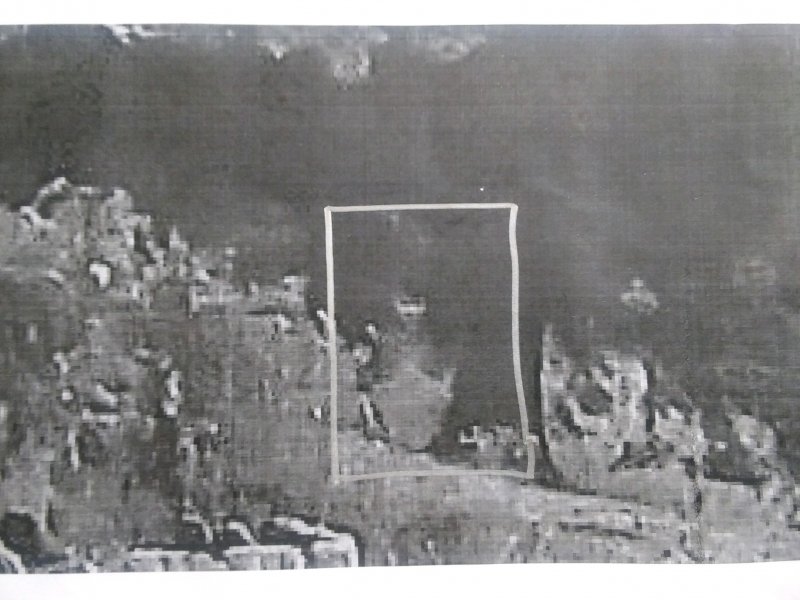
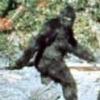
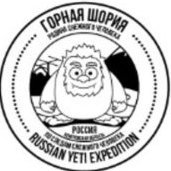

.jpg.b5c8420ce01458630cf89afd9b1fd29c.thumb.jpg.08a17e7147aee99ef1824b1f4b9a5c70.jpg)
